|
living:
exhibitions
 Capturing
celebrity Capturing
celebrity
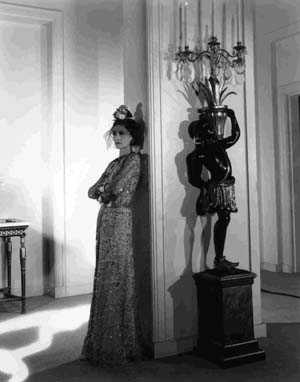
Gabrielle 'Coco' Chanel, 1937, Cecil Beaton. (Cecil Beaton
Archive, Sotheby's, London)
Cecil Beaton photographed everyone from Jean Cocteau
to Jean Shrimpton, documenting the 20th century’s fascination for
celebrity
photographed by Cecil Beaton
IN THE LAST NINE YEARS, Lucire
has attended numerous exhibitions. The exhibitions have to be relevant
to readers, and significant to fashion and society. Thus,
we looked at Jacqueline Kennedy’s White House years’ dresses in
New York, and we paid tribute to Gianni Versace at Te Papa in Wellington;
we celebrated Japonism in fashion at Te Papa in 2003, and now comes
another to antipodean shores.
Cecil Beaton’s Portraits, at the Christchurch
Art Gallery, is one such exhibition, following a successful stint
in 2004 at the National Portrait Gallery in London. That time, it
marked one of the biggest showings of Beaton’s work since Sir Roy
Strong’s exhibition of the photographer’s work in 1968, coinciding
with a renewed interest in Beaton.
We believe Beaton will always be interesting,
not just to the fashionista for his contributions to Vogue,
but to those fascinated by the cult of celebrity. As one of the
twentieth century’s great portrait photographers—if not the archetype
of the British portrait photographer—he has tracked everyone from
the Sitwells to the Rolling Stones, with the Duke and Duchess of
Windsor and Marilyn Monroe in between. The Windsors and Monroe are
on display—Monroe’s photographs are from her own collection.
As time passes, Beaton’s work does not fade into
the past. His subjects may be increasingly unknown to younger readers,
but his way of capturing celebrity remains a fascinating study.
He reminds us that the period just before some of us were born was
not that different to the time we live in today, and were as celebrity-obsessed
as ever.
He was perhaps not known for being technically
brilliant, either: Beaton searched for the right moment, and made
his reputation on that and on tireless subsequent instructions to
retouch. This, too, influences photographers today.
Beaton, born in 1904, bought his first
camera—a Kodak 3A—at age 11, and one of his earliest photographs
of his sister, Baba, opens the exhibition. The 1922 photograph was
taken during Beaton’s college years, and by 1925, he had set up
his photographic studio.
Stephen Tennant, one of the “bright young things”
of the period (perhaps the brightest?), was an early client
and became a close friend. The aristocrat was known for his decadent
lifestyle, and Beaton was drawn into this world.
In the 1920s, Beaton not only shot for British
Vogue but attended parties for the magazine, describing scenes
with Noël Coward, Gladys Cooper and name-dropped in his sentences
with the same passion, though perhaps greater courtesy, than may
be seen in the press today. Beaton perhaps was the first celebrity
photographer: a man as much part of the scene as he was assigned
to record it.
In the 1930s, Beaton met George Hoyningen-Heune
and Horst P. Horst, fellow photographers from the Continent. Between
them, and other Vogue contributors such as Man Ray
and Steichen, they set much of the decade’s leading look in fashion
photography.
The exhibition features Beaton’s portraits of
Nancy Cunard, the Jungman twins, Gary Cooper, Johnny Weissmüller,
Loretta Young, Marlene Dietrich, Coco Chanel, Elsa Schiaparelli,
HM Queen Elizabeth (later the Queen
Mother), and his friends Jean Cocteau (who called him ‘Malice in
Wonderland’) and Pablo Picasso.
After HM King Edward
VIII’s abdication, Beaton notably took photographs of the Duke and
Duchess of Windsor on their honeymoon, which were published in Vogue.
During the war years, Beaton became an official
war photographer, and continued his portraits in this context: Cecil
Day-Lewis, Benjamin Britten, and Walter Sickert and Helen Lessore.
His most famous portrait during this time, however, was Blitz victim
Eileen Dunne in his 1940 work Bomb Victim.
After the war, Beaton subjects included Albert
Camus, Jean-Paul Sartre, a young Marlon Brando and Yul Brunner,
and Greta Garbo, with whom the photographer had a romance. Adèle
Astaire and Coral Browne were also his lovers, but he never managed
to have a long-term relationship. It was generally understood that
the great love of Beaton’s life was art collector Peter Watson,
though the two never had a relationship.
In the 1950s, Beaton captured most of Hollywood’s
great stars, and became as famous after the war as he was before:
Audrey Hepburn, Elizabeth Taylor, Grace Kelly, Ingrid Bergman were
among his subjects. The jet-setting who’s who were also captured:
Maria Callas, Frank Sinatra, Sammy Davis Jr and Dean Martin, as
well as Sugar Ray Robinson, Francis Bacon, Lucian Freud, John Betjeman
and Dame Edith Sitwell.
Beaton photographed HM
Queen Elizabeth II at her coronation in 1953, another notable photograph
for the British Royal Family. It is said that Beaton’s image of
the young queen elevated her from a mere princess to someone who
could rule an Empire; though through his images even the Queen was
portrayed as human.
Beaton began work in 1956 on the costumes for
My Fair Lady for the American stage, and won an Oscar for
his work on the film version in 1964. He had won an earlier
Oscar for his work on Gigi (1957).
In the 1960s, Beaton photographed David Hockney,
Jean Shrimpton (the Shrimp, as she was known to fashionistas), Audrey
Hepburn, Rudolf Nureyev and Mick Jagger. He continued his work in
film, on Barbra Streisand’s On a Clear Day, You Can See
Forever. His last Broadway play was Coco (1969), starring
Katharine Hepburn.
Later portraits featured Andy Warhol, Ralph Richardson
and Louise Nevelson, and Bianca Jagger, some of which are shown
at Christchurch.
In 1971, Beaton’s Fashion at the V&A
was regarded as one of the great exhibitions, with 350 outfits
dating from the 1880s.
Beaton was knighted in 1972, and worked full
time till a stroke in 1974. He returned to photography briefly
in 1979 before his passing the following year.
He probably did not want to be remembered solely
as a photographer. He had tried for 30 years to write a play, but
failed to; and his work for the stage and for films should
not be overlooked. He painted, designed, diarized, wrote books and
poetry and drew caricatures. He published his diary notes and sketches
from My Fair Lady, and the musical’s lyricist, Alan Jay Lerner,
once said that ‘inside Cecil Beaton there was another Cecil Beaton
… One did the sets, another did the costumes. A third took the photographs.
Another put the sketches in an exhibition, then into magazines,
then in a book. Another Cecil photographed the sketches and sold
these.’
In all this, he contributed to the way the 20th
century recorded its fascination for celebrity, and history may
well record him favourably for that. •
Cecil Beaton: Portraits will be at the Christchurch Art
Gallery till September 10, 2006. Admission NZ$12, concession NZ$10; children
are admitted free.
Add
to Del.icio.us | Digg
it
|
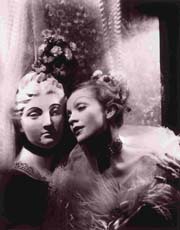
Marlene Dietrich, 1935, Cecil Beaton. (Cecil Beaton Archive,
Sotheby's, London)
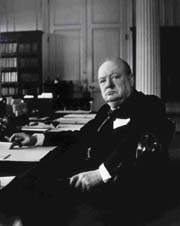
Winston Churchill, 1940, Cecil Beaton. (National Portrait
Gallery, London)
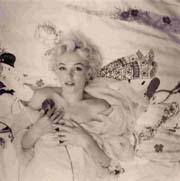
Marilyn Monroe, 1956, Cecil Beaton. (Cecil Beaton Archive,
Sotheby's, London; courtesy Matt Weld)
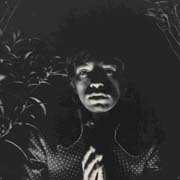
Mick Jagger, Marrakesh, 1967, Cecil Beaton. (Cecil Beaton
Archive, Sotheby's, London)
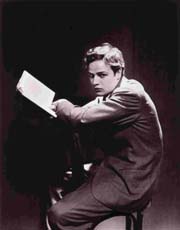
Marlon Brando, 1946, Cecil Beaton. (Vogue/the Condé
Nast Publications)
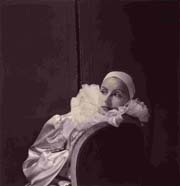
Greta Garbo, 1946, Cecil Beaton. (Cecil Beaton Archive, Sotheby's,
London)
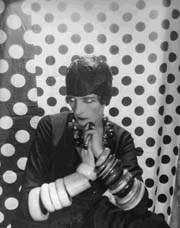
Nancy Cunard, 1929, Cecil Beaton. (Cecil Beaton Archive,
Sotheby's, London)
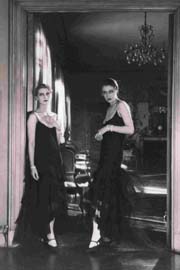
Lee Miller and Marion Morehouse, 1929, Cecil Beaton. (National
Portrait Gallery, London)
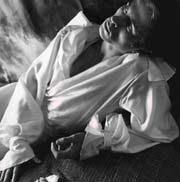
Rudolf Nureyev, 1963, Cecil Beaton. (Cecil Beaton Archive,
Sotheby's, London)
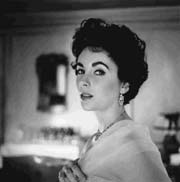
Elizabeth Taylor, 1954, Cecil Beaton. (Cecil Beaton Archive,
Sotheby's, London)
|

